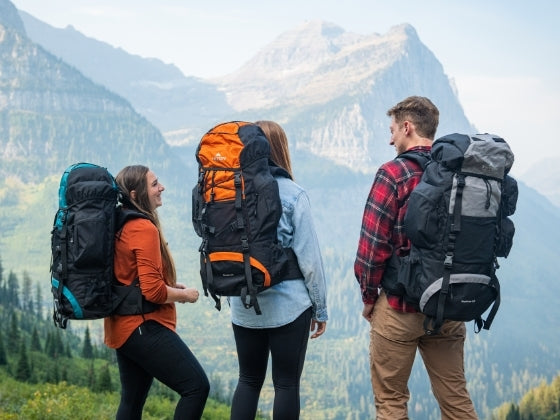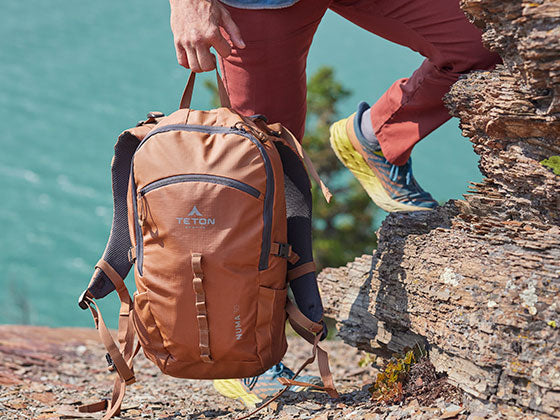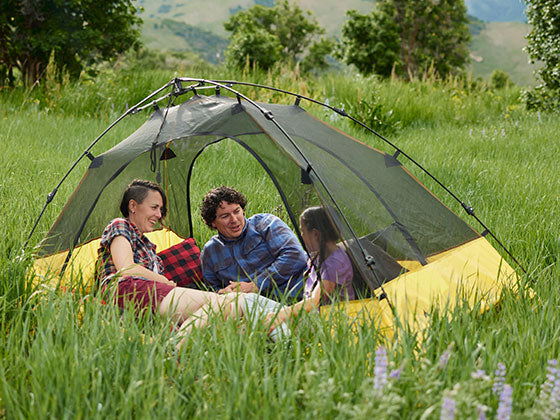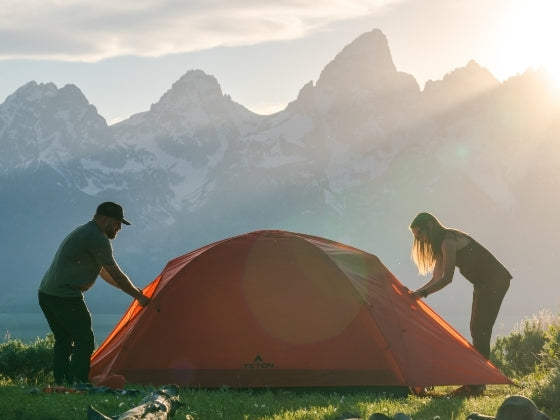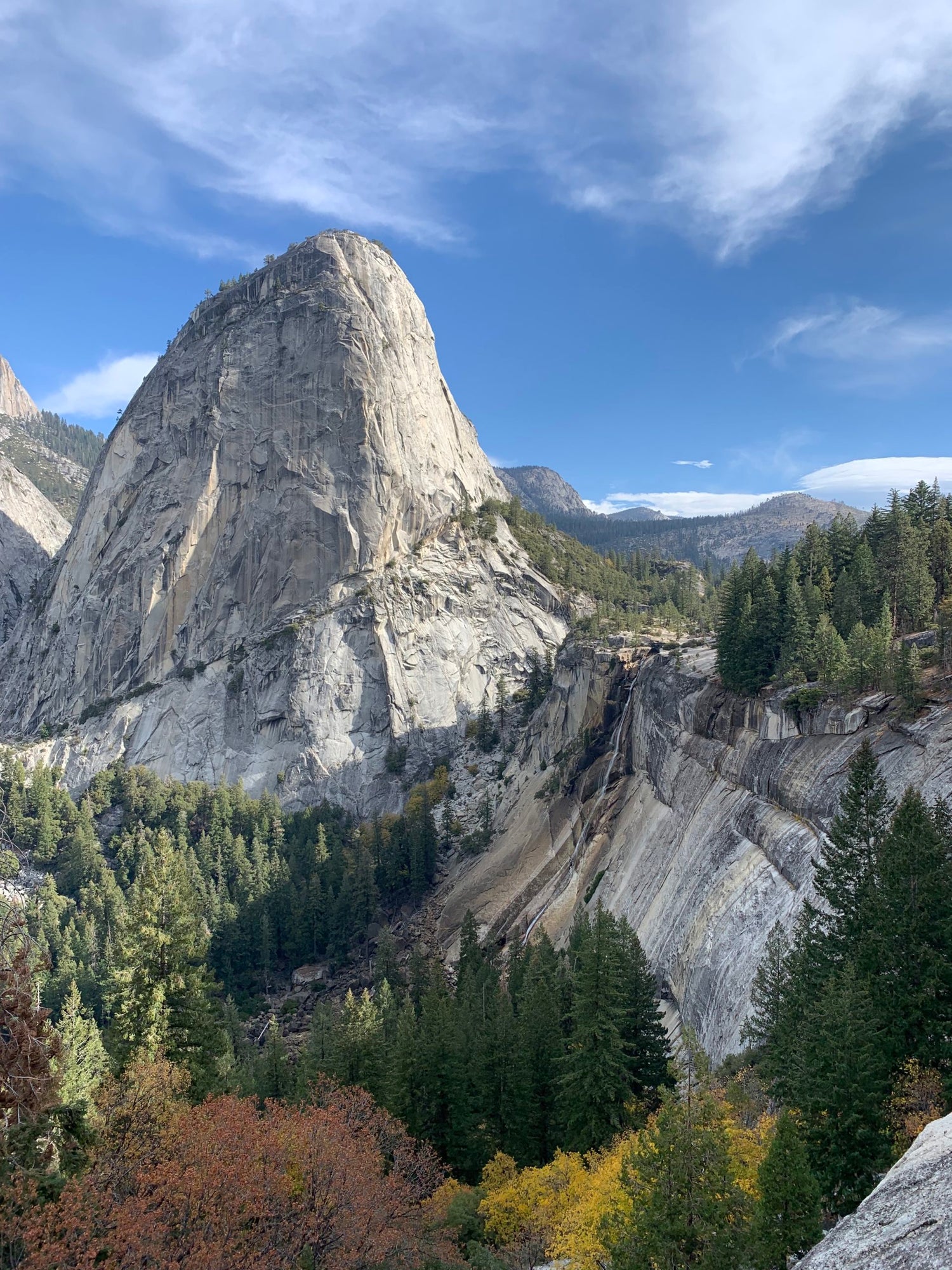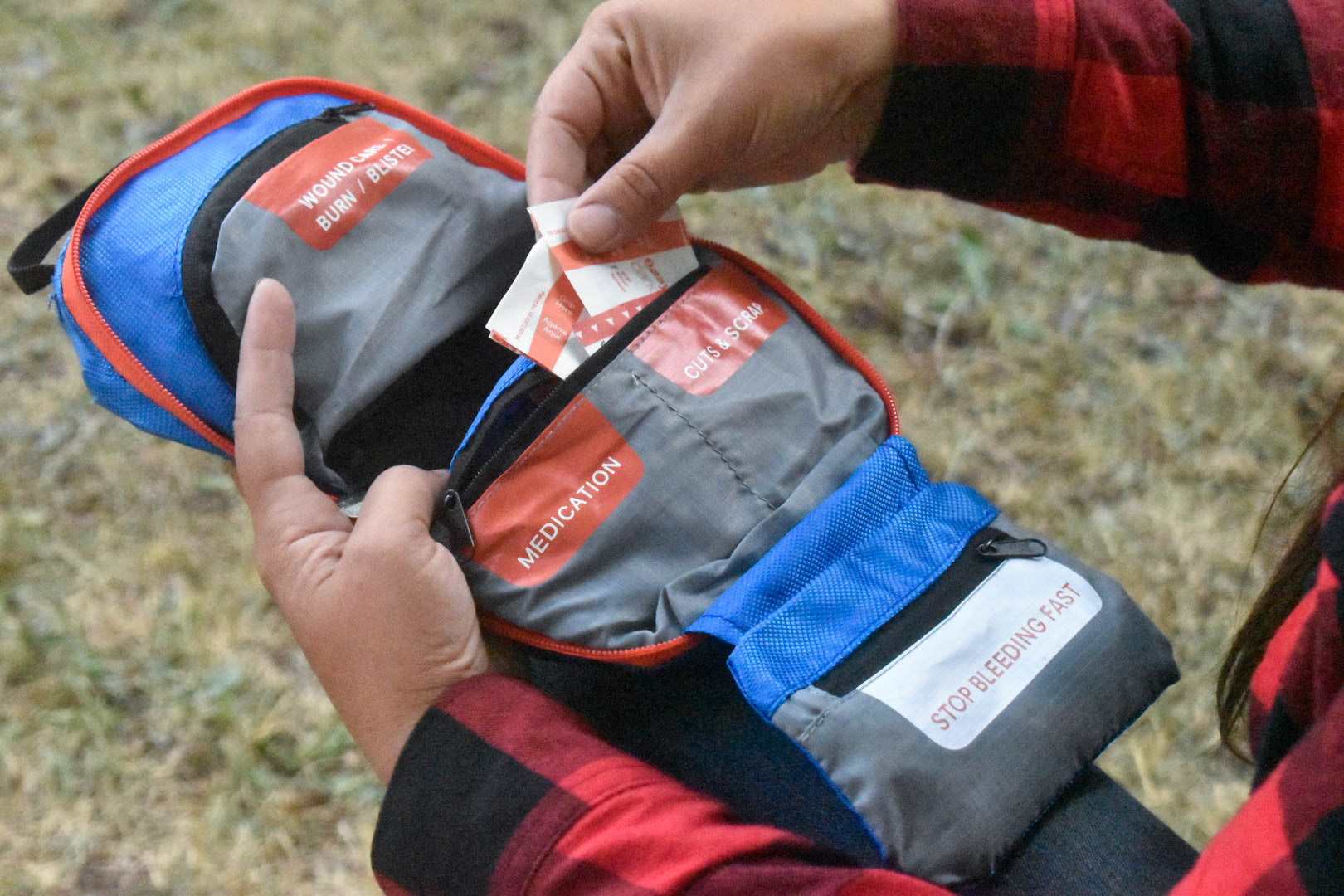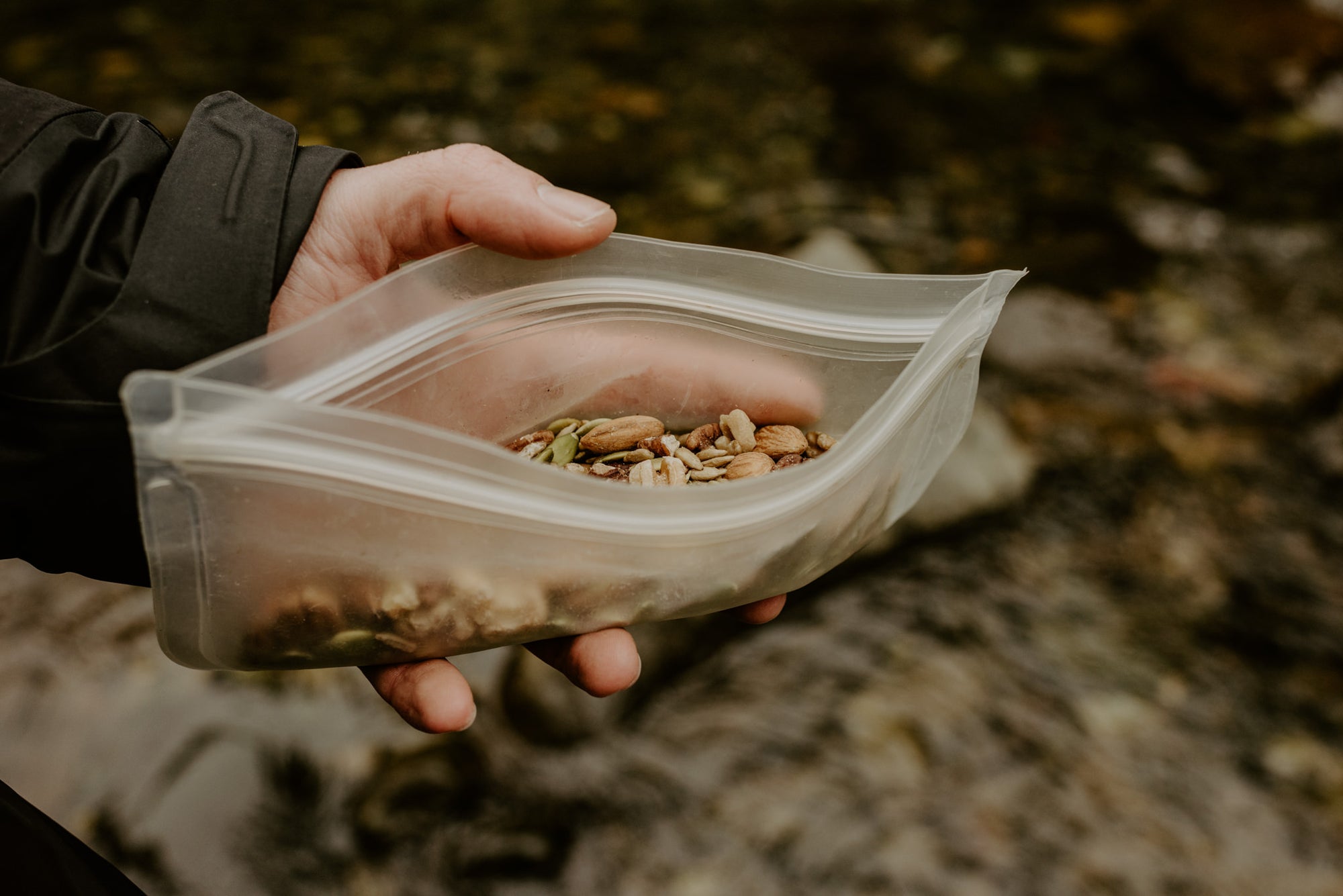By: Travis Mewhirter
It’s when your legs feel more like lead, but your body begins dumping adrenaline—enough to make your arms tingle and palms sweat a bit—that you know you’re close. And my wife, Delaney, and I were close. Close to the most iconic image in a National Park replete with iconic images. It was the mountain you see on so many sweatshirts and tee shirts and posters and Instagram accounts; the one that looks as if it were sheared clean in half.
We had always wanted to hike Half Dome, but attaining permits is tough, mostly luck of the draw. And our work schedules—we play beach volleyball professionally, and our season runs roughly from May through October, which also happens to be prime hiking season—have never aligned quite right to make Half Dome a realistic possibility.
Yet, there we were on October 17, hiking the final leg up to Half Dome, legs heavy, lungs seared, heart rate high for the best of reasons.
Getting to Half Dome
There are myriad ways to hike Half Dome, and none are necessarily better than the other. My wife and I opted for a two-day stay in Yosemite, which, in retrospect, is the option I would most recommend.
We stayed our first night in the backpacker’s campground in the valley, which costs just $8 per person and provides all the basic amenities you’d need, with bathrooms close to where you’ll pitch your tent and running water near enough to the campgrounds for which you’d need a reservation.
Camping in the valley allowed us to wake up early, around 6:30 in the morning, make a quick breakfast, re-pack the bags, and get moving by 8 a.m. We scooped our wilderness permit and off we went.
The route we took is also one I’d highly recommend, though, again, it is not the only way, and I’ll explain a few others you could take. We began on the John Muir Trail at the Happy Isles Trailhead, which is perhaps the most popular trailhead in the park.
From there, the Mist Trail will take you up to Vernal Falls on a steep—and I do mean steep—incline. Here is where being a single-day hiker comes in more valuable than words can describe: Day-hikers’ packs are remarkably lighter than a backpacker’s, especially if you’re making it a three- or four-day trip. You’ll be able to have a significantly faster pace, and you won’t be so tired once you make it to the top of Vernal, which only precedes another steep incline to Nevada Falls, roughly another mile and a half up the hike.
You don’t have to go all the way to Nevada Falls, as it’s half a mile out of the way, but it’s a lovely place to eat lunch, and the view is spectacular. It’s also one of the last places you’ll be able to fill up your waters—filters recommended, even though the river is running quite fast near Nevada—before making the final push to Half Dome.
From Nevada, you’ll get back on the trail towards Little Yosemite Valley, which is where we had a reservation to camp. It’s a basic campground, with bathrooms, bear vaults, but, again, no water. The closest water source is the Merced River, which is about a 10 or so minute walk away. So, if you don’t fill up near Nevada, you’re going to need to fill up at the river, because the final stretch of the hike is intense.
Straight uphill you’ll go again, about 3.5 miles through deep forest, winding your way not directly to Half Dome, but around to the side of it. If you have a reservation at Little Yosemite, as we did, I recommend you make your camp to lighten your load, as these final 3.5 miles, after trudging up Vernal and Nevada, will clobber your legs.
Once you’re clear of the forest, the trail will take you to Sub Dome, which is directly up the side of Half Dome.
Then it’s time for the famous Half Dome cables, and here I must make a note: If the cables are down, please do not attempt to climb them without a harness. One slip and it’s almost a guaranteed disaster. You’re not tethered to anything, and you’ll be a liability to anyone who is below you.
If they are down, and you have a harness, you’re good to go. And if they’re up, and you have a permit—fines are steep if you attempt this without a permit—no need for the harness; you’ll be just fine.
Why I recommend making this a two-day trip
A lot of the individuals we met on the hike were day-hikers. They began their days at 7 a.m., got to Half Dome around noon, and made their way down that night. In the summer, this is totally fine, as the days are long, and you’ll have plenty of time to do so. In the fall, however, the sun sets earlier, and you’ll be finishing the hike in the dark, exhausted and hungry. It’s just a less enjoyable experience, and there is little sense in doing this hike if you won’t enjoy it.
In retrospect, I’d have much preferred to get to Little Yosemite in the early afternoon, make camp, hang, play some cards, maybe drift around in the Merced, get to bed early, then hit Half Dome in the morning when I was fresh and could enjoy the experience more and have more time there.
However, as I mentioned, the majority of people seemed to be day-hikers. Their packs were far lighter, paces better, and didn’t have to bother with timing their Half Dome permit with a Little Yosemite reservation as well, which can be tricky.
Another two routes you could take to see Half Dome
While most will take the route we did—Mist Trail to Vernal Falls to Nevada Falls to Little Yosemite to Half Dome—there are two more routes you could take to summit Half Dome.
The first is similar, beginning at the Happy Isles Trailhead. Instead of taking the Mist Trail, however, you’ll stay on the John Muir Trail, which will take you up to Clark Point and around the other side of Vernal and Nevada Falls. This is the route we took on our way down, and it’s one of my favorite hikes in the park. It’s longer, but less steep, and the views are phenomenal. Once you get to Nevada, the trails intersect, and are the same to the top of Half Dome.
The last route, and one you should only take if you’re ready for one heck of a trip, is from Cloud’s Rest, a magical site in the park that can only be attained by a serious hike. There are various ways to get to Cloud’s Rest, and none of them are easy—it’s one of the most strenuous hikes in the park—but one of the ways down from Cloud’s Rest is via the Half Dome trail. This is immensely rewarding, as Cloud’s Rest is no easy feat, but it’s long, and hard. But at the end of the day, if it takes you to Half Dome, it’s well worth the trip.
About the Author:
Travis Mewhirter
Travis Mewhirter is an award-winning journalist, author of four books, podcast host, and professional beach volleyball player. Raised in Hampstead, Maryland, he moved to California when he was 25, and has since made a career of being outside — either on the beach or in the mountains, writing wherever he goes. When he’s not playing beach volleyball, you can find him in the mountains, camping with his wife, Delaney.

